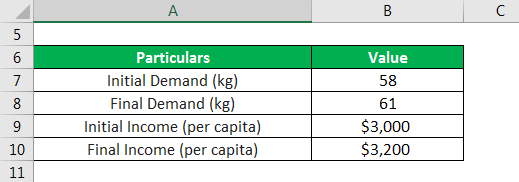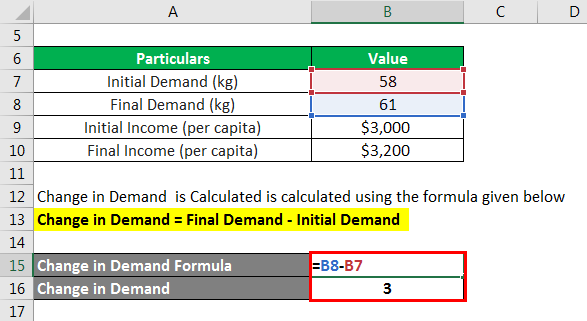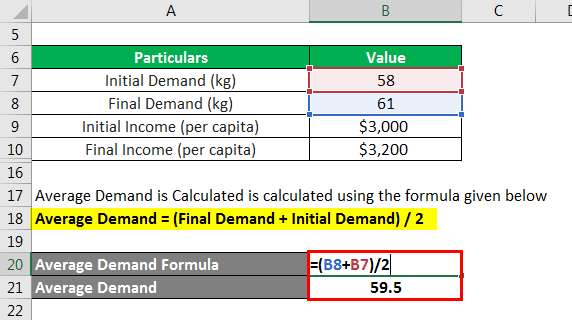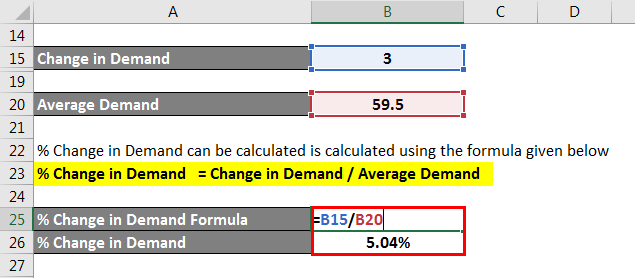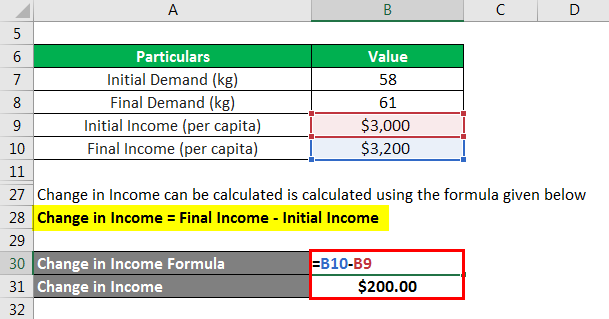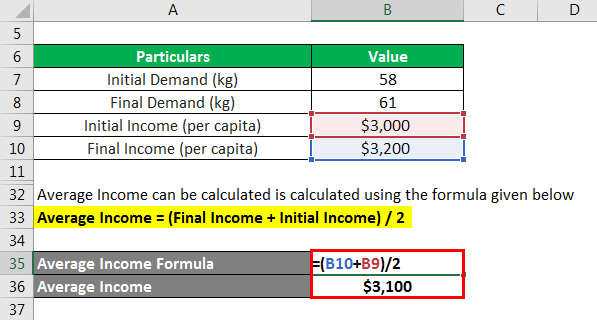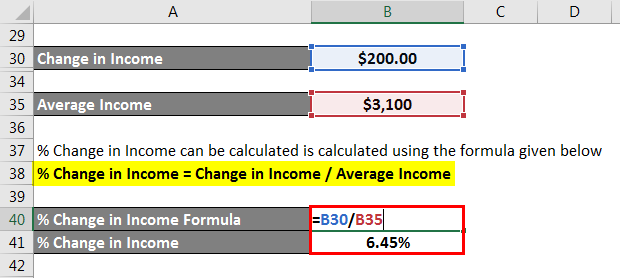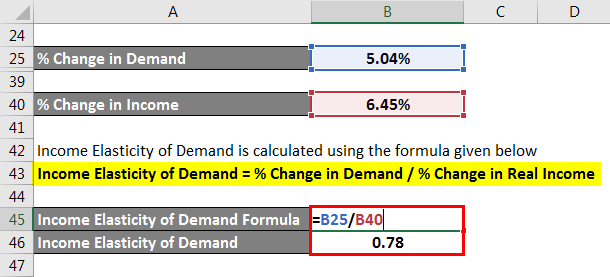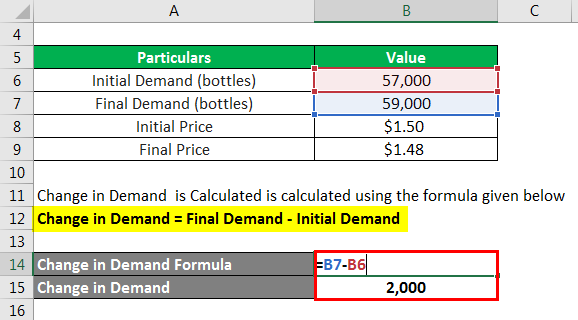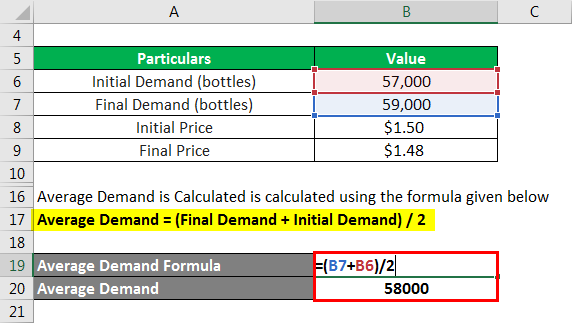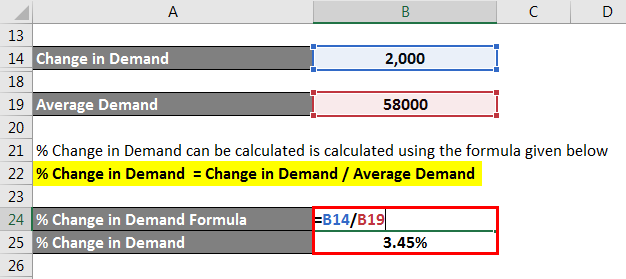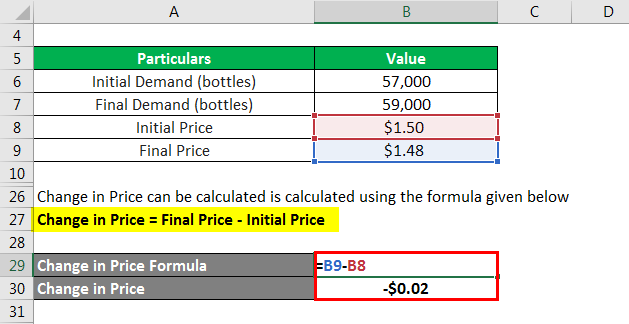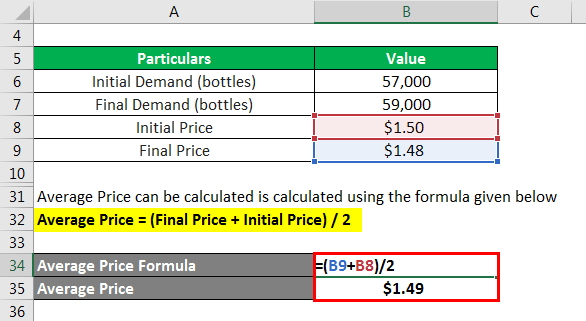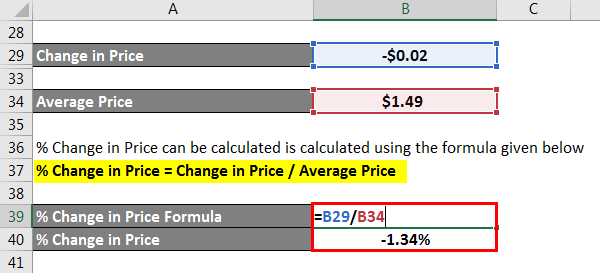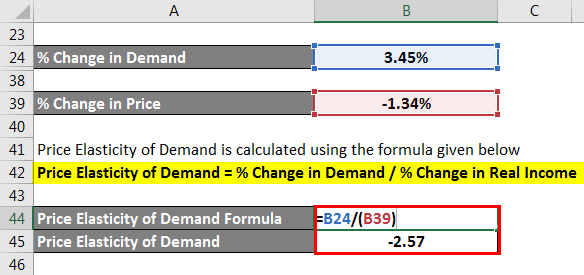Updated July 25, 2023
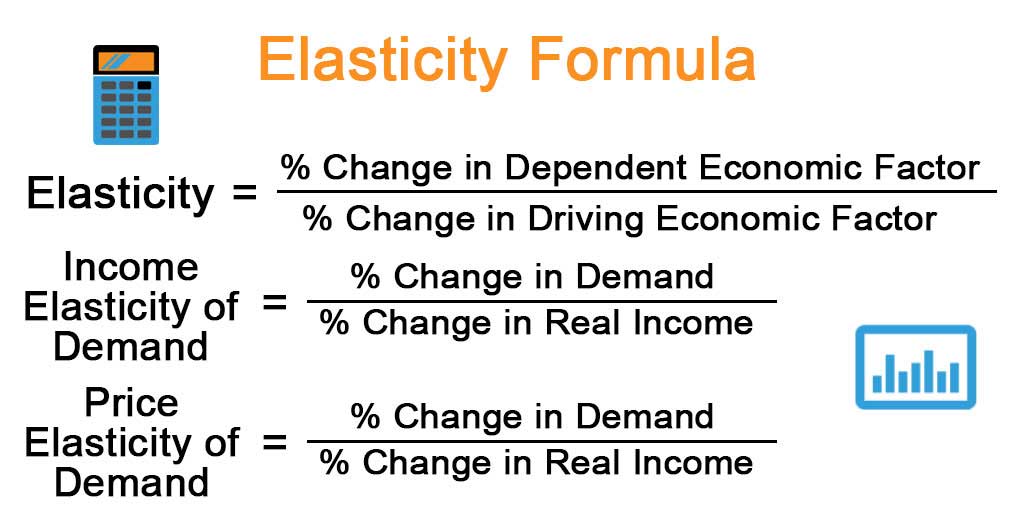
Elasticity Formula (Table of Contents)
What is the Elasticity Formula?
The term “elasticity formula” refers to the measurement of relative change in an economic factor owing to the relative change in another economic factor.
In other words, it helps in measuring the influence of variation in the driving economic factor (e.g.: income and price) on the dependent economic factor (e.g.: demand). Two of the major instances of elasticity formula are 1) Income elasticity of demand and 1) Price elasticity of demand
The formula for elasticity can be expressed as a proportional change in the dependent economic factor by a proportional change in the driving economic factor.
Formula
In the same line, the income elasticity of demand formula is expressed as % change in demand by % change in real income which is mathematically represented as,
Similarly, the Price Elasticity of Demand Formula Is Expressed as % Change in Demand by % Change in Price Which Is Mathematically Represented as,
Example of Elasticity Formula (With Excel Template)
Let’s take an example to understand the calculation of Elasticity in a better manner.
Elasticity Formula – Example #1
Let us take the example of the impact of change in per capita income on the per capita demand for rice in order to illustrate the concept of income elasticity of demand. If the increase in per capita income from $3,000 to $3,200 resulting in an increase in per capita consumption of rice from 58 kg to 61 kg, then determine the income elasticity of demand.
Solution:
Change in Demand is Calculated is calculated using the formula given below
Change in Demand = Final Demand – Initial Demand
- Change in demand = 61 kg – 58 kg
- Change in demand = 3 kg
Average Demand is Calculated is calculated using the formula given below
Average Demand = (Final Demand + Initial Demand) / 2
- Average Demand = (61 kg + 58 kg) / 2
- Average Demand = 59.5 kg
% Change in Demand can be calculated is calculated using the formula given below
% Change in Demand = Change in Demand / Average Demand
- % Change in Demand = 3 kg / 59.5 kg
- % Change in Demand = 5.04%
Change in Income can be calculated is calculated using the formula given below
Change in Income = Final Income – Initial Income
- Change in Income = $3,200 – $3,000
- Change in Income = $200.00
Average Income can be calculated is calculated using the formula given below
Average Income = (Final Income + Initial Income) / 2
- Average Income = ($3,200 + $3,000) / 2
- Average Income = $3,100
% Change in Income can be calculated is calculated using the formula given below
% Change in Income = Change in Income / Average Income
- % Change in Income = $200 / $3,100
- % Change in Income = 6.45%
Income Elasticity of Demand is calculated using the formula given below
Income Elasticity of Demand = % Change in Demand / % Change in Real Income
- Income Elasticity of Demand = 5.04% / 6.45%
- Income Elasticity of Demand = 0.78
Elasticity Formula – Example #2
Now, let us take the example of influence price on the sale of a certain soft drink in order to illustrate the concept of price elasticity of demand. If the company is able to increase its monthly sales from 57,000 bottles to 59,000 bottles simply by reducing the price from $1.50 per bottle to $1.48 per bottle, then determine the price elasticity of demand.
Solution:
Change in Demand is Calculated is calculated using the formula given below
Change in Demand = Final Demand – Initial Demand
- Change in Demand = 59,000 – 57,000
- Change in Demand = 2,000
Average Demand is Calculated is calculated using the formula given below
Average Demand = (Final Demand + Initial Demand) / 2
- Average Demand = (59,000 + 57,000) / 2
- Average Demand = 58,000
% Change in Demand can be calculated is calculated using the formula given below
% Change in Demand = Change in Demand / Average Demand
- % Change in Demand = 2,000 / 58,000
- % Change in Demand = 3.45%
Change in Price can be calculated is calculated using the formula given below
Change in Price = Final Price – Initial Price
- Change in Price = $1.48 – $1.50
- Change in Price = -$0.02
Average Price can be calculated is calculated using the formula given below
Average Price = (Final price + Initial price) / 2
- Average Price = ($1.48 + $1.50) / 2
- Average Price = $1.49
% Change in Price can be calculated is calculated using the formula given below
% Change in Price = Change in Price / Average Price
- % Change in Price = -$0.02 / $1.49
- % Change in Price = -1.34%
Price Elasticity of Demand is calculated using the formula given below
Price Elasticity of Demand = % Change in Demand / % Change in Real Income
- Price Elasticity of Demand = 3.44% / (-1.34%)
- Price Elasticity of Demand = –2.57
Explanation
The formula for Elasticity can be computed by using the following steps:
Step 1: Firstly, determine the change in the dependent economic variable over the given period. Then, compute the % change in the dependent variable by dividing the change in the dependent economic factor by its average value over the period.
% Change in Dependent Economic Factor = Change in Dependent Economic Factor / Average Value of Dependent Economic Factor
Step 2: Next, determine the change in the independent or driving economic factor over the period. Then, compute the % change in the driving variable by dividing the change in the driving economic factor by its average value over the period.
% Change in Driving Economic Factor = Change in Driving Economic Factor / Average Value of Driving Economic Factor
Step 3: Finally, the formula for elasticity can be derived by dividing the % change independent economic factor (step 1) by the % change in driving economic factor (step 2) as shown below.
Elasticity = % Change in Dependent Economic Factor / % Change in Driving Economic Factor
Relevance and Use of Elasticity Formula
The concept of elasticity primarily used in building a business strategy intended for maneuvering demand. In fact, it considered being fundamental in deciphering the secrets of supply and demand in a market. Some of the common applications of elasticity include:
- Effect of the price change on revenue
- Analysis of the impact of advertisement on consumer demand
- Analysis of incidence of the tax burden
Recommended Articles
This is a guide to Elasticity Formula. Here we discuss how to calculate the Elasticity Formula along with practical examples. We also provide a downloadable excel template. You may also look at the following articles to learn more –
